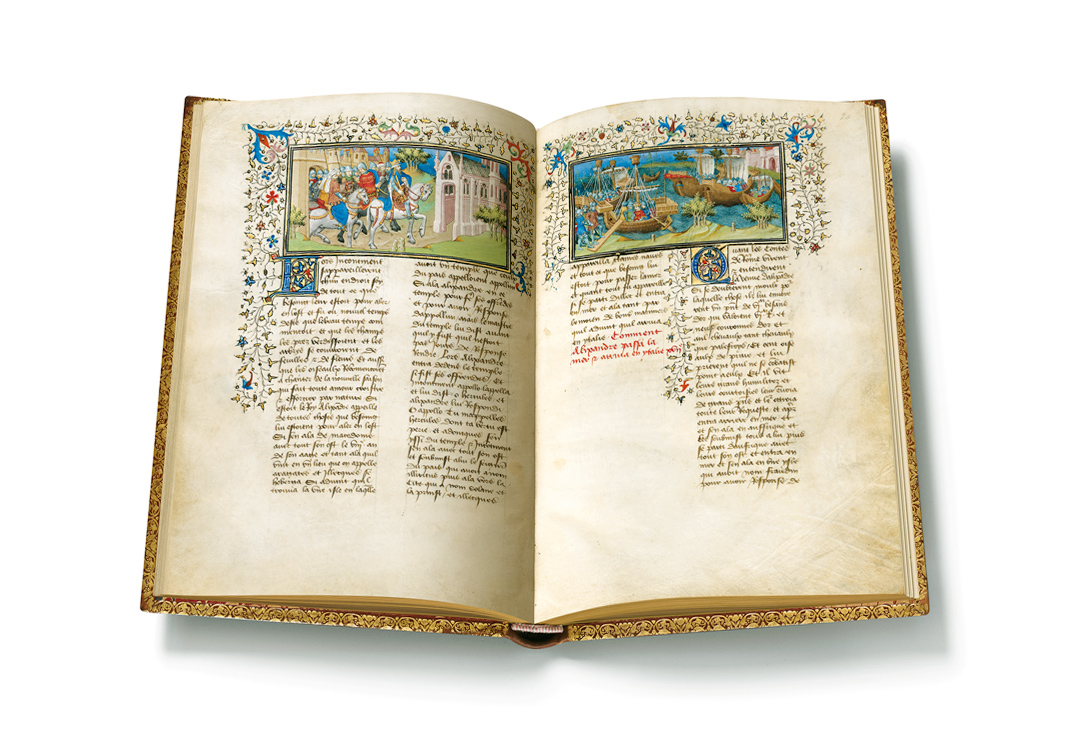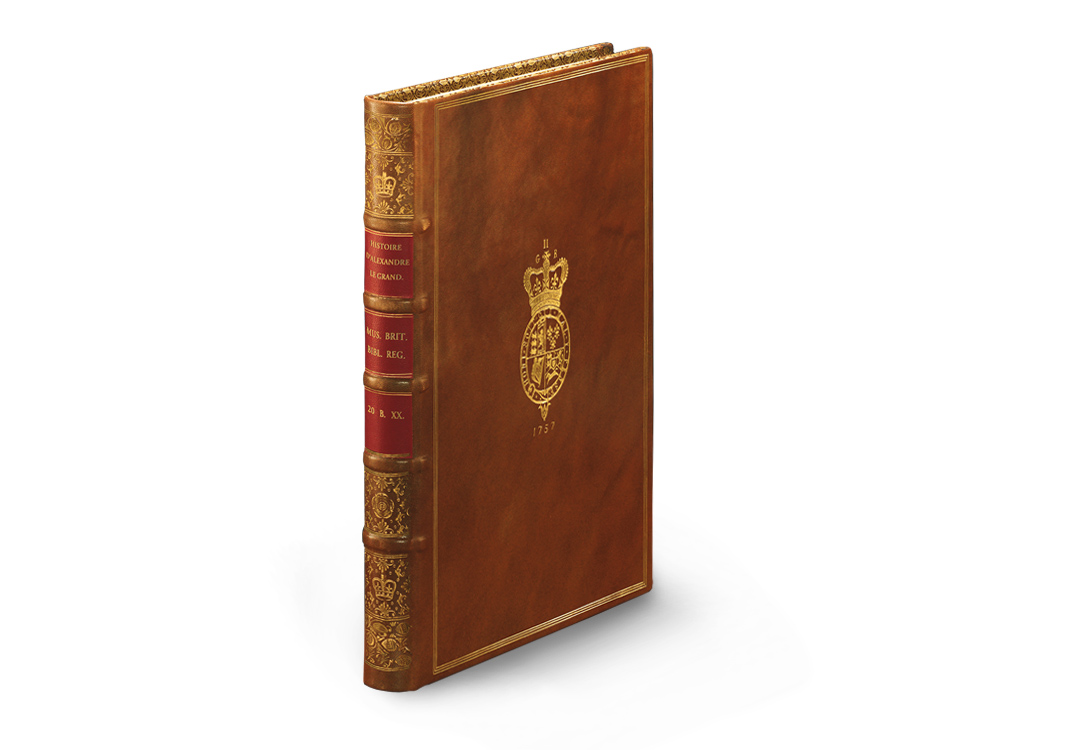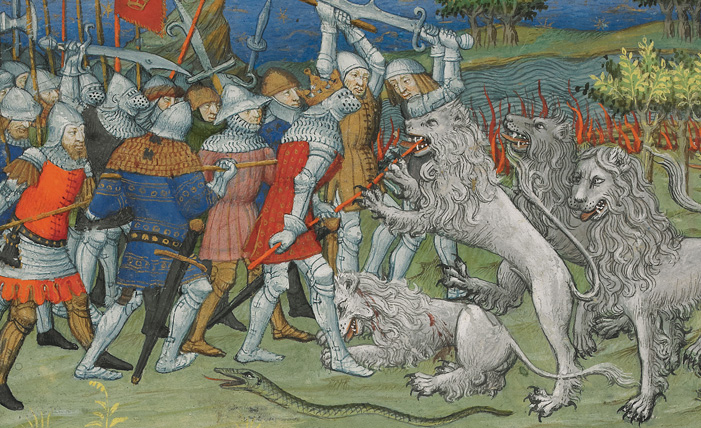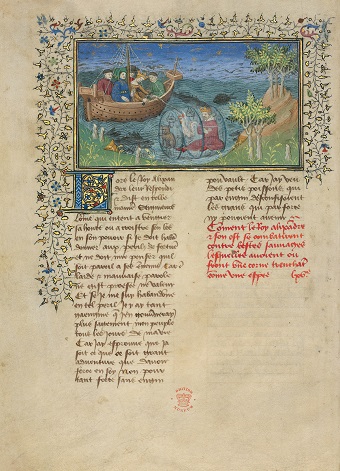The Romance of Alexander
A Journey to Strange Worlds in Gothic Images
Come along with Alexander the Great on his conquests and expeditions to the end of the world! Experience the most exciting adventures and encounter cyclopes, speaking serpents, dragons, giant crabs, vampires, and other fabulous creatures! Follow the popular hero of Antiquity on his journeys through the air and into the depth of the sea! Be enchanted by the legendary stories and the magnificent images in one of the most beautiful manuscripts of the medieval Romance of Alexander!
Pariser Alexanderroman
The Romance of Alexander: The Manuscript
Medieval World Literature
Five hundred years after Alexander the Great had conquered the Persian Empire and extended the frontiers of Macedonia to create one of the largest empires in Antiquity, all sorts of legendary tales about miracles and atrocities ascribed to Alexander coalesced into the Greek Alexander Romance. It was immensely popular in the Middle Ages, and was passed on in numerous translations and adaptations. The ancient hero’s adventurous life story is indeed considered the most widely-read and adapted secular book of world literature before Gutenberg began printing books, even more popular than the Arthurian Romance and the legend of the Trojan War. The Romance of Alexander is among the most beautiful medieval illuminated manuscripts of this epic.
A Role Model for Knightly Virtues
In medieval literature and numerous works of the visual arts, Alexander the Great was seen as a paragon of courtly culture. He was the ‘perfect knight’, the embodiment of all knightly virtues, and those who emulated him gained great prestige. The epic of Alexander’s adventurous exploits did not only satisfy its readers’ desire for exciting entertainment, presenting the king as a role model; it was also judged suitable for the education of young princes. In similar vein, this copy of the Romance of Alexander could have been intended for a youthful recipient. This is suggested not only by the great number of miniatures and the convenient size but also by the importance attached to the teacher-disciple relationship between Alexander and Aristotle.
In the Collection of Henry VIII
The question remains open as to who commissioned the Romance of Alexander. The earliest surviving marks of ownership are found on the front flyleaf (fol. Ir). It bears the distinct handwritten ‘HR’ monogram, which stands for ‘Henricus Rex’, clearly referring to King Henry VIII of England. The Romance of Alexander might already have been part of his father’s library at Richmond Palace. In 1542 the manuscript was listed in the inventory of the Upper Library at Westminster. In 1757 all volumes of the Old Royal Library, the Romance of Alexander included, were donated by King George II to the newly founded British Museum; its library department gave rise to the British Library.

Pariser Alexanderroman
Under the Magnifying Glass: Imaginative and Highly Original Miniatures
Pariser Alexanderroman
The Romance of Alexander: The Edition
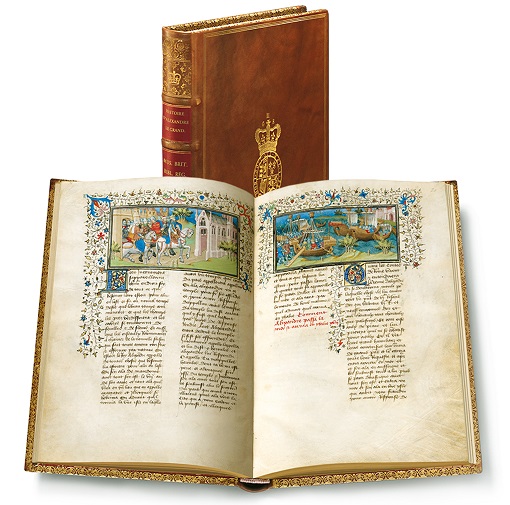
The Manuscript and the Facsimile at a Glance
The Romance of Alexander from the 15th century is shimmering with gold and undoubtedly ranks among the most lavishly illuminated manuscripts of this epic, which was so widely popular in the Middle Ages. The facsimile edition of this pictorial treasure is true to the original, offering to every viewer an authentic experience of Gothic book illumination.
Manuscript: London, The British Library, Royal MS 20 B XX
Date of Origin: c. 1420/25
Place of Origin: Paris
Dimensions: c. 28.4 x 19.5 cm
Extent: 194 pages (97 leaves)
Artist: The Master of the Royal Alexander
Patron: unknown
Illumination: 86 miniatures, more than 100 multiline initials, fine foliate sprays, decorated borders, gold leaf and shell gold
Binding: light-brown leather with gold-tooled frames and the arms of King George II of England
Commentary Volume for the Facsimile Edition by Maud Pérez-Simon / Joanna Fronska / Siegbert Himmelsbach
Print run: 680 copies
Pariser Alexanderroman
Enjoy Viewing 10 Sample Pages:
A Glance at the Facsimile
The section from the Romance of Alexander depicted here shows fols. 78v–83r. Gold-framed miniatures inserted at the top decorate almost all the pages, while the text follows below, beginning with an initial letter four lines high. Each initial continues into the margin with a generous decoration of fine golden trefoil leaves surrounding the miniature.
The miniatures depict various mythical creatures and strange peoples which Alexander and his army meet on their way to the East: serpent monsters, Cynocephali, Cyclopes, Blemmyes, and horse-lions. These scenes are followed by the burial of Alexander’s horse Bucephalus, the building of a city, some elephants offered as a gift, and the prophetic birds at the palace of Xerxes.
Pariser Alexanderroman
A Challenging Production: fac simile
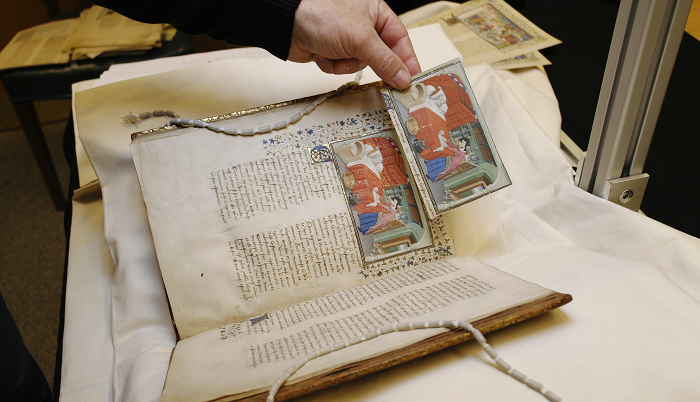
With Utmost Care
After photographs of the original manuscript are taken on the premises, the corresponding digital data are processed. Subsequently, all the pages are printed and compared with the original Romance of Alexander in the British Library. The lithographer pays special attention to errors of colour shading and the faithful reproduction of gold and silver, since their application requires special printing processes. Print approval is only given after additional print runs for comparison and correction. Constant monitoring even at the printing press guarantees a qualitatively consistent print run. To emulate the lively varied appearance of the original, patinas are applied to the gold and silver parts.
The Bookbinder’s Craft
The facsimile bookbinder traditionally works with his hands. He folds the printing sheets and assembles them in sections or gatherings. At the sewing frame the sections are attached to each other to form the book-block. The binder needs a steady hand for embroidering the headband with coloured threads. For the covers he selects appropriate calf skins to match the original. Subsequently, he attaches the hand-cut leather to the book boards. The folds and bands are then shaped with a folding tool. Finally, gold tooling is applied to the front and back covers, the spine and the edges.
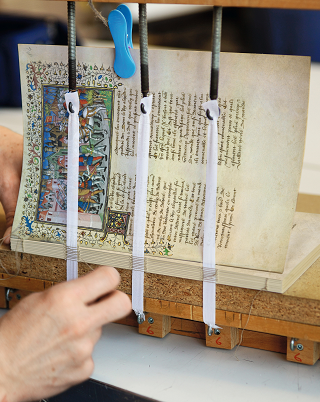
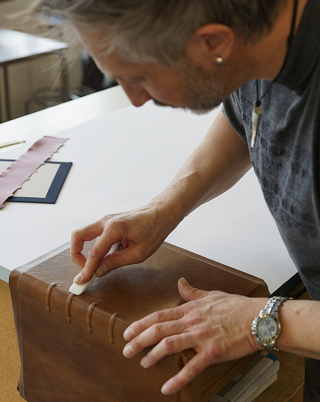
Pariser Alexanderroman
The Facsimile Folder for the Edition
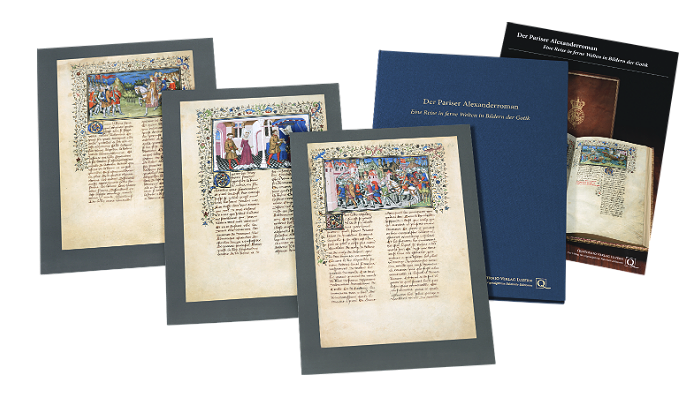
Pariser Alexanderroman




